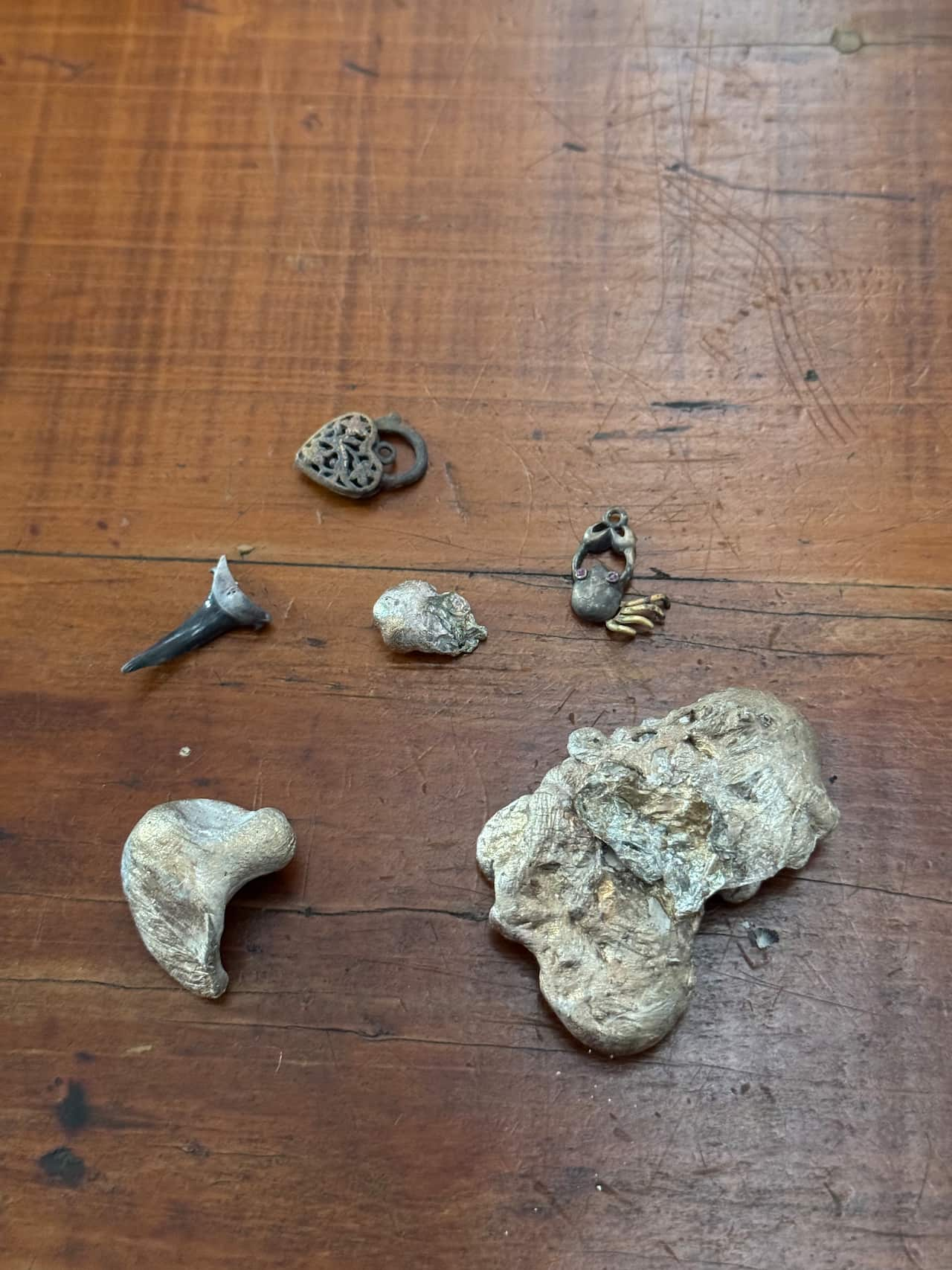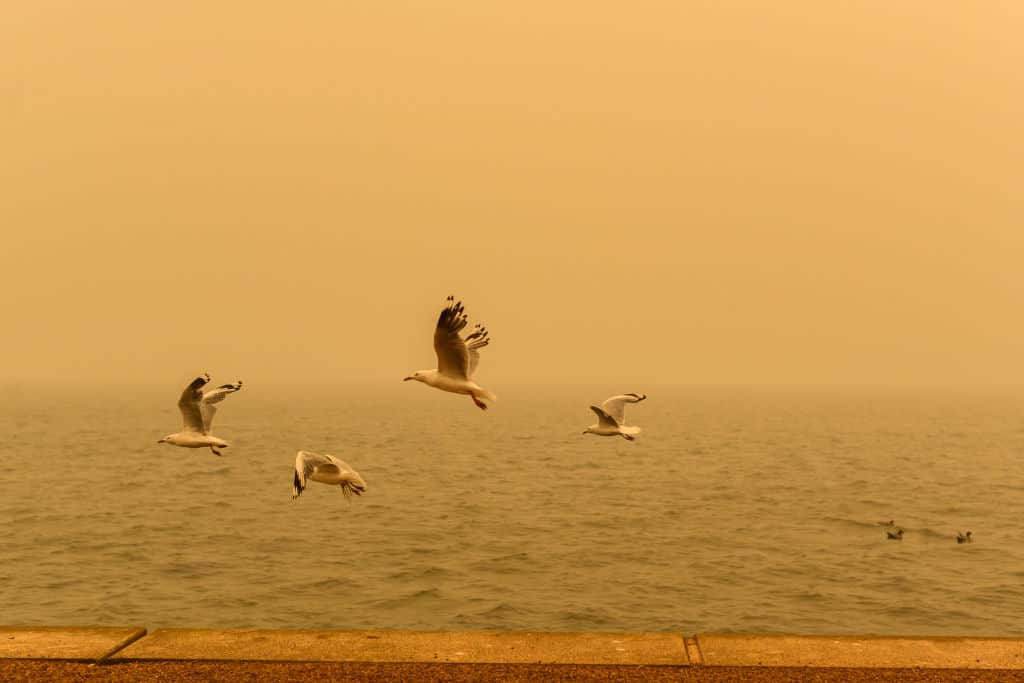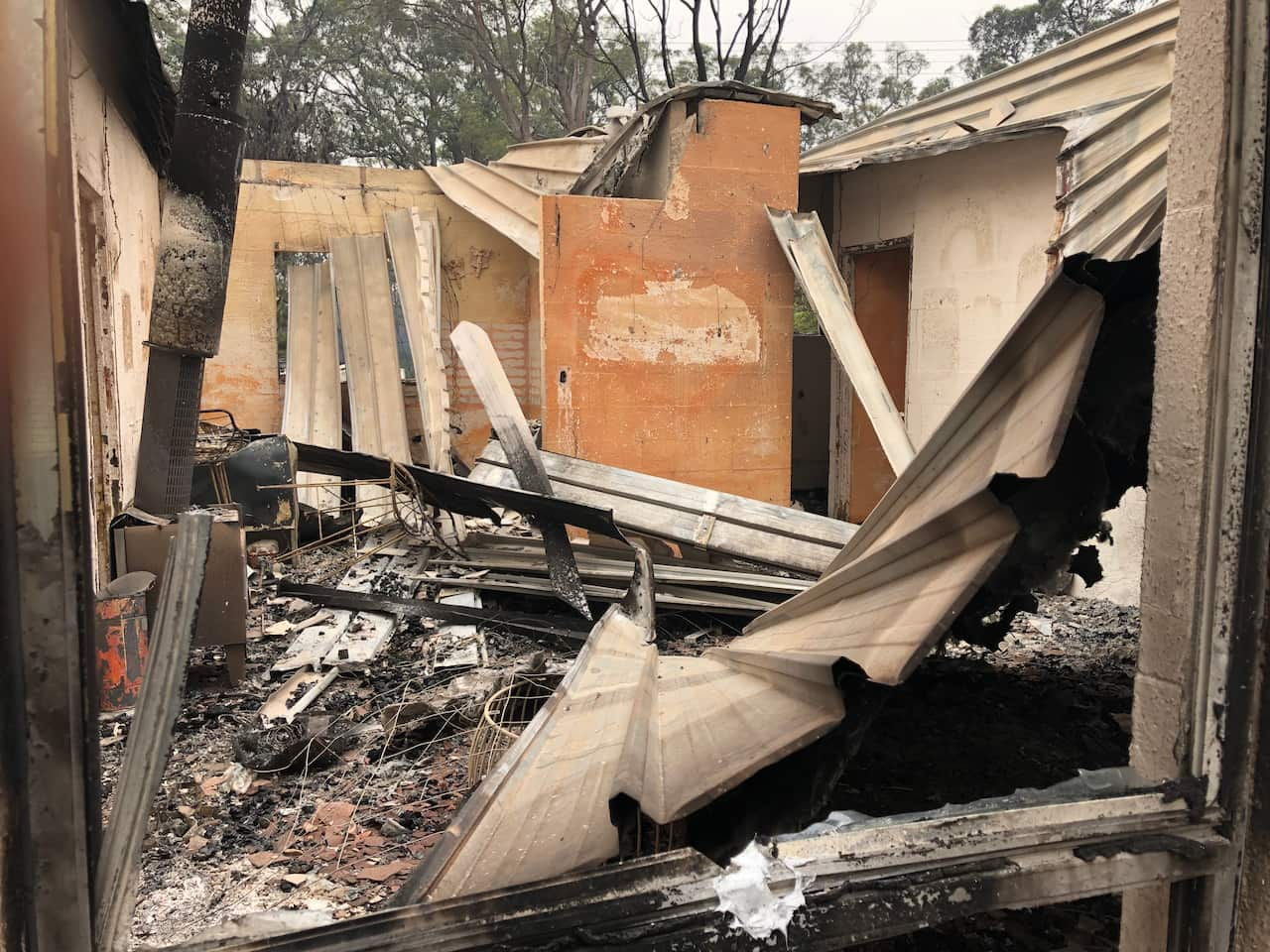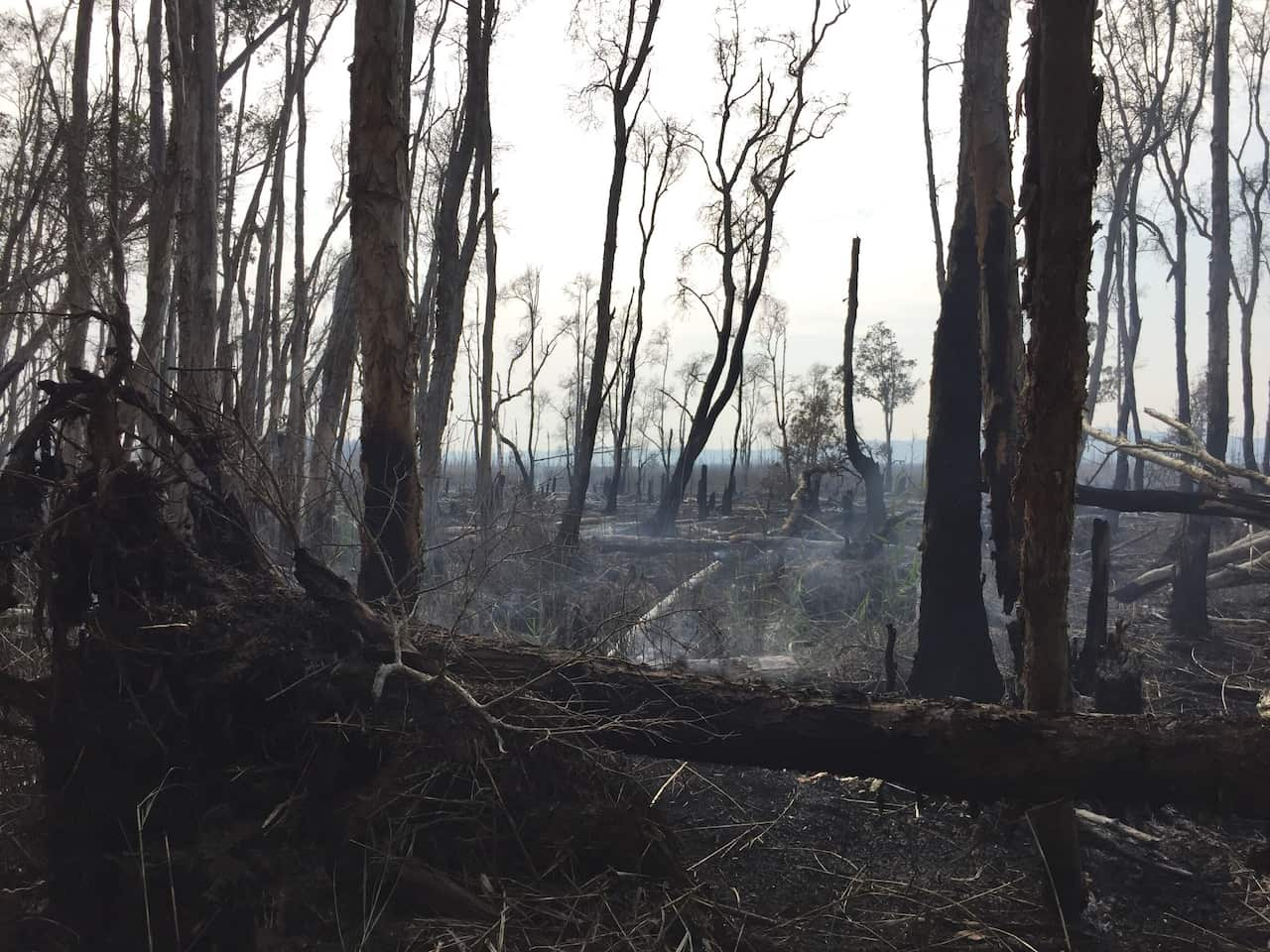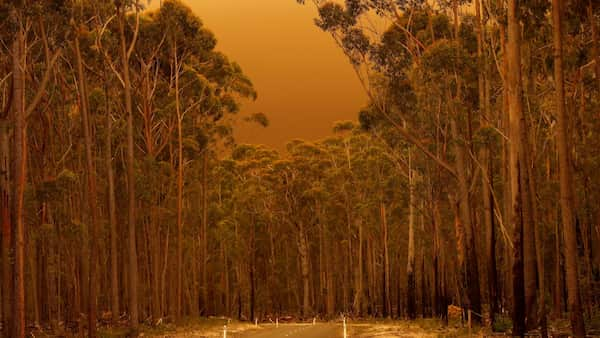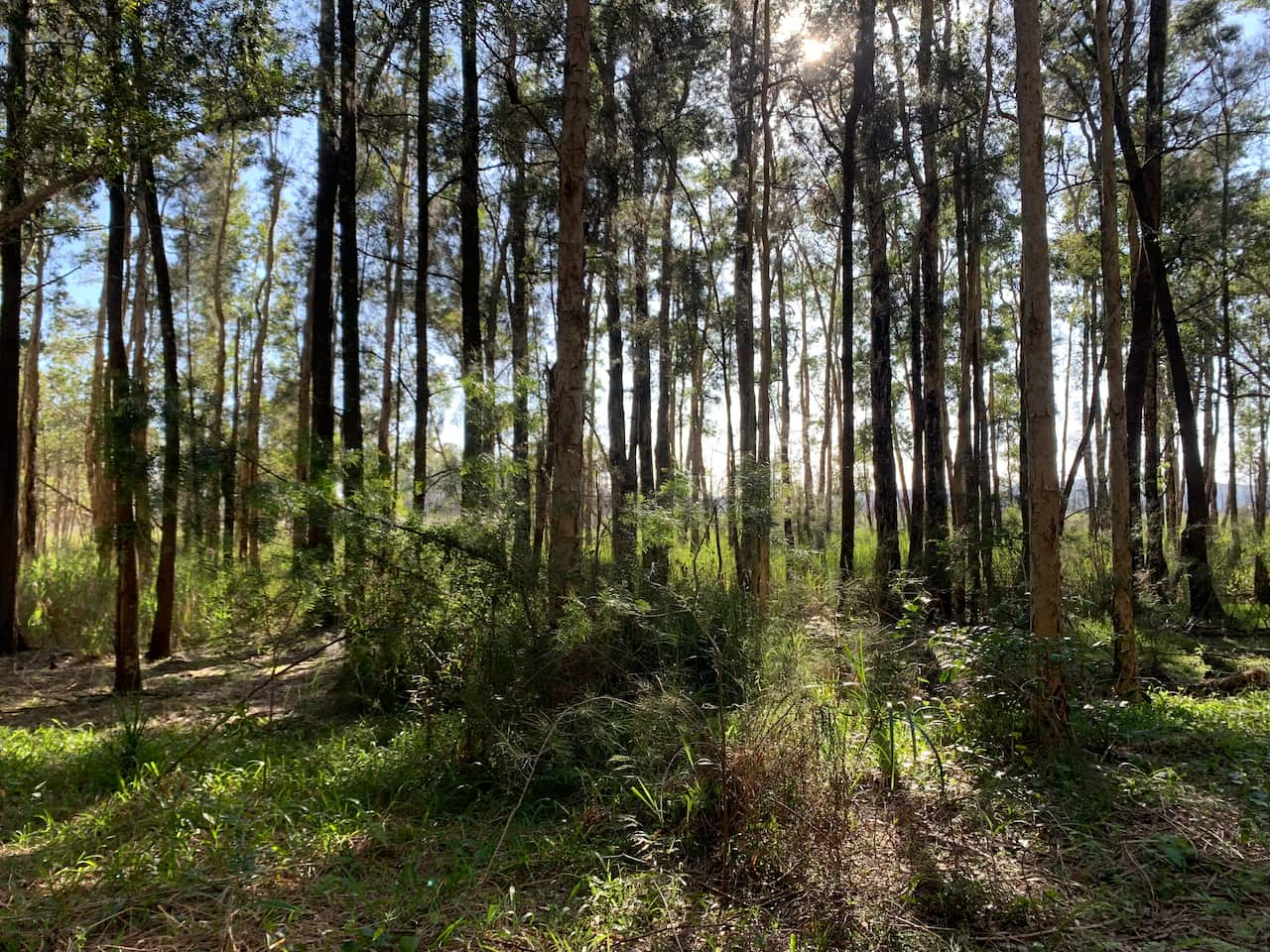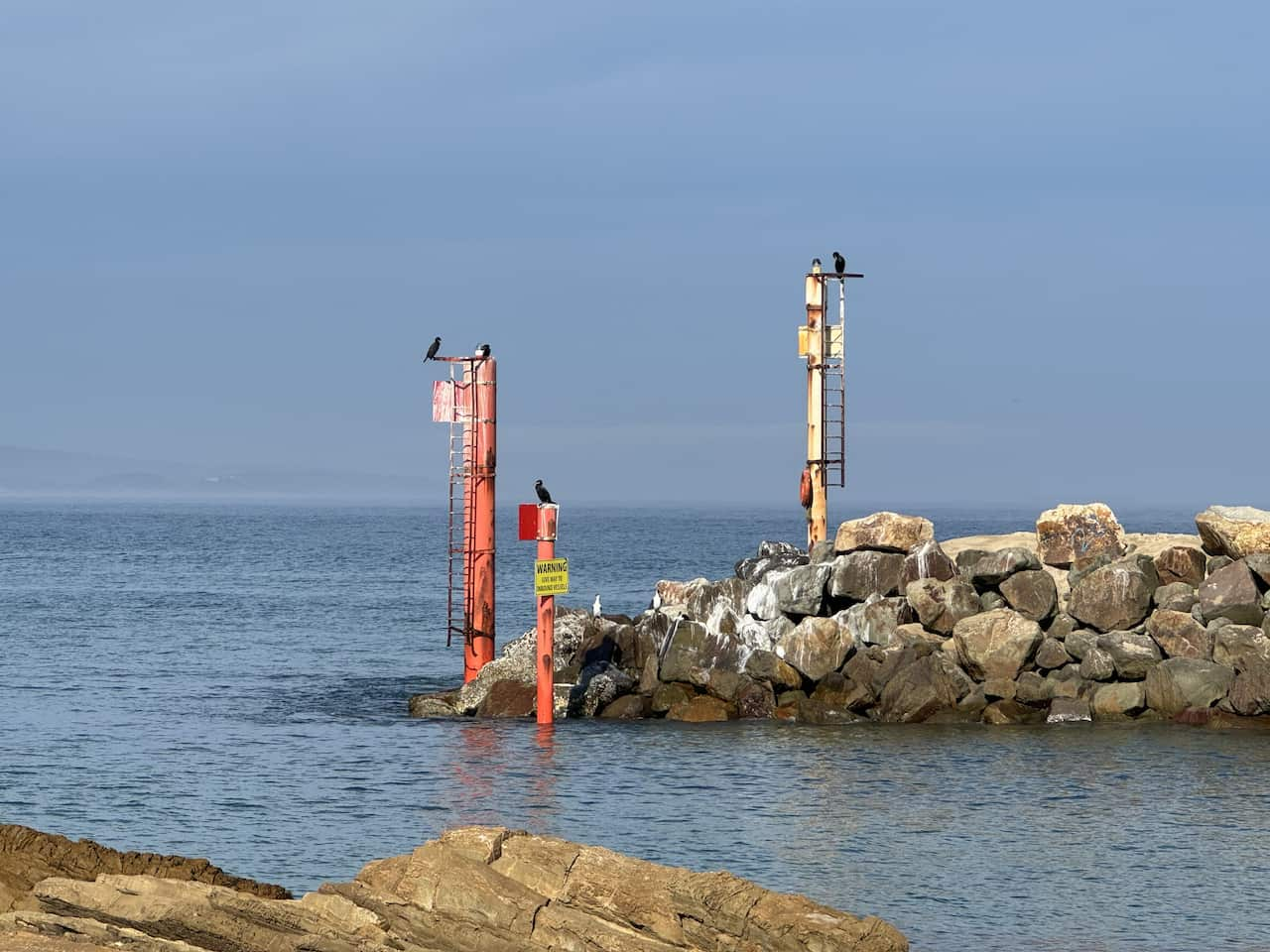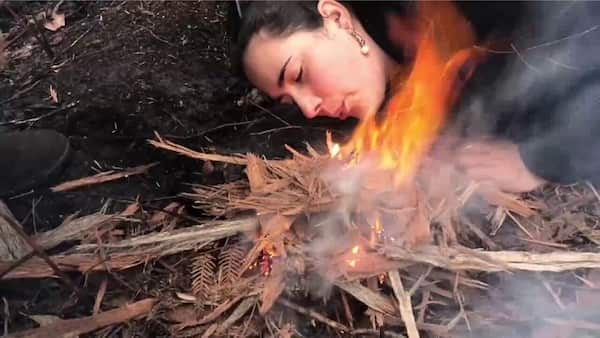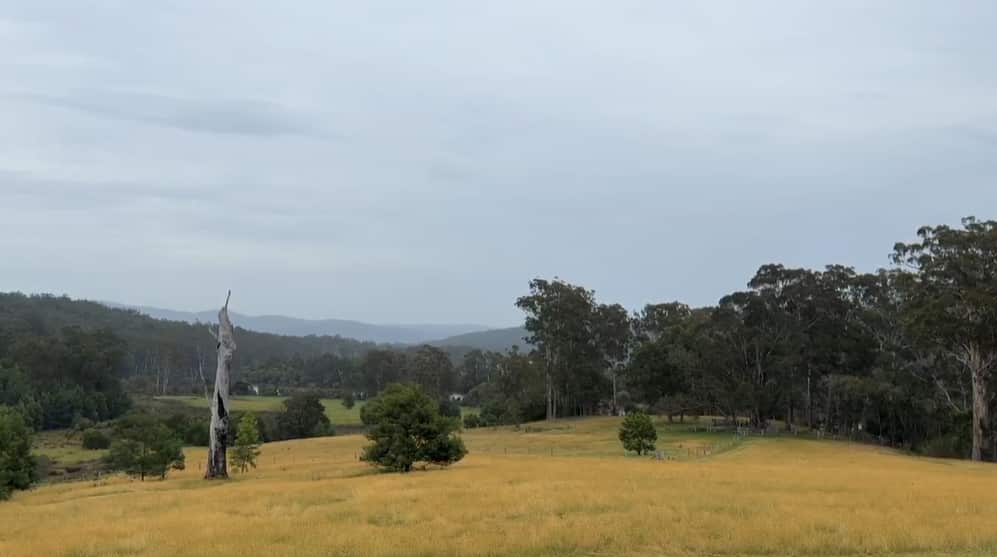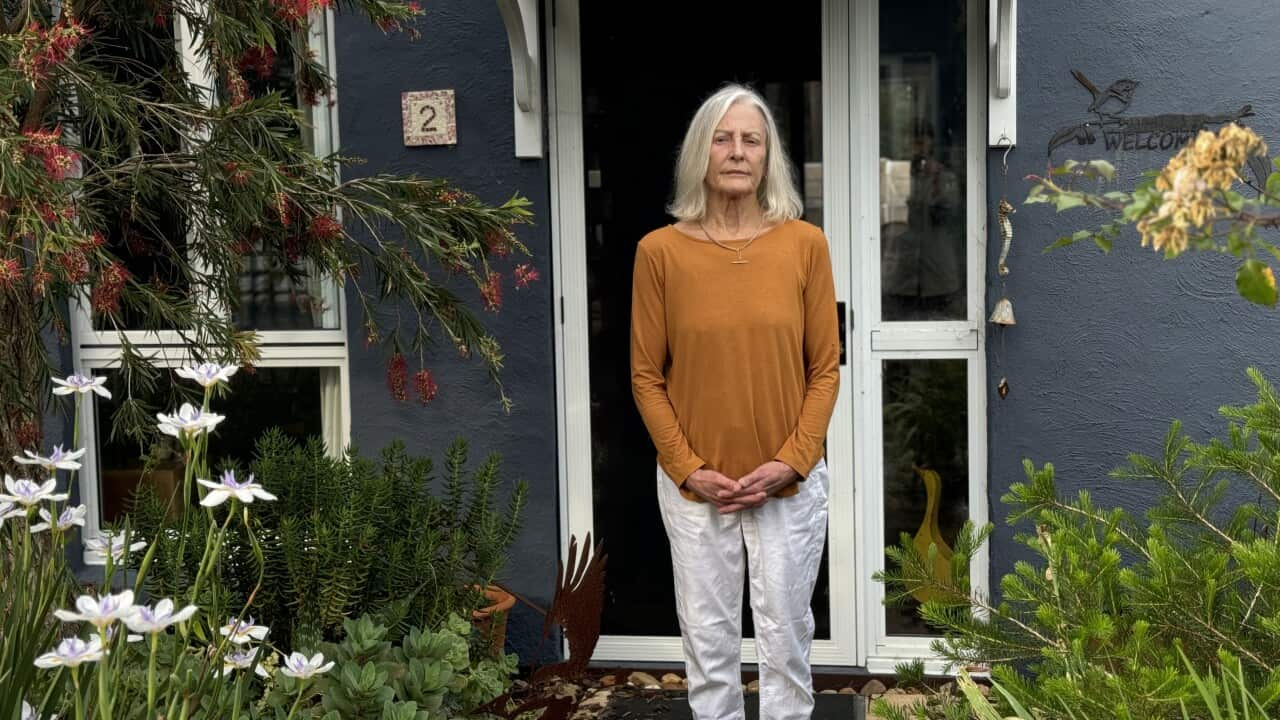When Jann Gilbert lost her home , she couldn’t have imagined a more profound sense of grief. But seeing the “smouldering ruins” of her life in Mallacoota after fires swept through the Victorian coastal town on New Year’s Eve in 2019 was not the worst of it.
Jann lost everything she owned — seven decades of photos, research papers, irreplaceable furniture from another life in Europe, degrees, letters, notes, artworks and books, all burnt to ash.
Precious jewellery melted into abstract piles.
“I’ll never forget seeing my mother’s pearls on the ground. I went to pick them up, and they just crumbled; they were powder,” Jann says, sitting in her new unit.
“I’m still really angry about that night.”
Pieces of melted jewellery were the only things Jann Gilbert was able to pick out of the ash from her destroyed home. Source: SBS News / Madeleine Wedesweiler
Jann was devastated to lose her home — she had only finished renovations three weeks before.
But what hurt more was the environmental destruction.
“All you heard for the first two weeks was shotguns ringing out — because of all the animals that just weren’t quite dead. I never want to see that amount of devastation again. I just keep thinking about those animals.”
In Mallacoota, the waterfront is all-important — it’s a source of peace and beauty, as well as money from tourism and fishing industries.
For two weeks after the fires though, the whole waterfront was covered in ash and thousands of dead birds.
For two weeks after the Black Summer bushfires, the waterfront in Mallacoota was blanketed in ash, with thousands of dead birds scattered across the area. Source: Getty / Rohan Thomson
The birds came out of the forest, trying to escape the flames. But the air sacs in their wings — very fine membranes that help them to breathe — were too full of smoke, and so they fell out of the sky, suffocating. Ecologists counted over 150 species among the corpses.
Jann says it’s hard to remember exactly, but she spent at least a week camped at the town’s waterfront after the fire came through. Surveying the damage was traumatising.
There was absolutely nothing left.
Jann Gilbert
“There was nothing across the road. There was nothing for hundreds of kilometres that way along the coast. And the same up that way,” she says, pointing north and south.
Jann’s unit took three and a half years to rebuild. The new one is like the old one but more fireproof this time, with a 5,000-litre underground water tank and solar power.
Jann Gilbert’s unit was destroyed by bushfires on New Year’s Eve 2019 in Mallacoota. Source: Supplied / Jann Gilbert
The walls are covered in artworks by local artists, and the garden is full of flowers and veggies.
“When it happens again,” Jann says, she’ll turn the gas off and the sprinklers on.
Gas was a problem for her unit block in 2019: the three units adjacent to Jann’s were holiday rentals, and no-one had switched the gas off, so the bottles exploded, igniting Jann’s place.
She can’t stand the sound of wind now — it triggers memories of the 49-degree heat that accompanied the flames, which came within 150m of where people were sheltering at Mallacoota wharf.
Five years on, Jann says her message to Australians is simple: “Do something about getting emissions down.”
Jann is a scientist and an expert in marine biology. She’s known for a long time that man-made climate change would exacerbate natural disasters, but she says “actually experiencing it first-hand was life-changing”.
I can’t believe I’m still protesting this shit. Seriously, I can’t believe it.
Jann Gilbert
Jann Gilbert’s place ignited when gas bottles next door exploded. Source: Supplied / Jann Gilbert
The Black Summer bushfires of 2019 and 2020 burned an area of the Australian landscape roughly equivalent to the size of the United Kingdom.
The trauma of the fires is still alive in many communities worst hit by the disaster.
Humans typically react to danger and traumatic events in three ways: fight, flight or freeze.
For many survivors, Black Summer elicited a powerful fight reaction — their distress at seeing animals and forests incinerated has alchemised into a firm resolve to stop it from happening again.
Angela Frimberger’s Lake Innes bush block after it was burnt in Black Summer bushfires in 2019. Source: Supplied / Angela Frimberger
Angela Frimberger decided to make a career change after a fire burned her Lake Innes property for six weeks from October 2019.
The 10-hectare bush block backs onto Lake Innes Nature Reserve, just outside of Port Macquarie on NSW’s mid-north coast.
In October, the “sanctuary” she had lived in for 16 years caught alight when embers from the Crestwood fire jumped the lake on 28 October, and upsettingly, the place stayed alight for more than three weeks.
“At that time it was still really early in the season, so we had lots of fire crews, we had water bombers, we had flame retardant, we had lots of fire engines onsite,” Angela says.
“They were able to control the fire, but not to extinguish it because Lake Innes was very, very low at that time because of the drought so all this peat in the edge of the lake was exposed and combustible.”
The fire got into the peat and wouldn’t go out — the carbon in the thick compost meant flames essentially stayed smouldering underground.
Having no other real choice but to stay and defend their property, Angela and her husband formed a daily routine.
“We would just get up in the morning and patrol the fence line and put out spot fires and take a break, and hose the roof and patrol the fence line and put out spot fires, and hose the roof and have lunch,” she says.
“We got pretty handy with a garden hose and a rake for people who had never done firefighting before.”
The same site on Angela Frimberger’s property, five years after the Black Summer bushfires. Source: Supplied / Angela Frimberger
Every few hours at night, they would do a mini-patrol, but those were quicker because the orange fires glowing in the dark were easier to see.
With the fire, there was always anxiety, which was manageable when the conditions were favourable, but a small change in wind could spike the risk — and the fear.
Seventh November became known as “the scary day” when the conditions worsened from ‘severe’ to ‘extreme’.
The fire came right up to Angela’s house, and her family had to flee with very little time to spare, driving through a paddock as the driveway burned.
The fire was extinguished by the end of November but they had to watch the rest of the country burn all summer.
It makes Angela cry to recall “seeing town after town after town, all over Australia, experiencing what we had just experienced and knowing what those people were going through”.
Your heart goes out to those people.
Angela Frimberger
Angela says the experience had a significant impact on her children too.
“Our daughter was just starting her HSC year … all those kids were spending their whole day looking out the window at the colour of the sky and wondering what was happening at home and checking their phones for text messages,” she says.
“How do you concentrate when [your] home is on fire?”
A couple of weeks ago, Angela spotted a koala in the trees through her kitchen window — a major milestone.
She knew koalas had been on the property recently, indicated by tree scratches and droppings, but this is the first time since 2019 she has seen one up near the house, where they used to gather in the dozens before the fires.
Motivated to make a change after Black Summer and wanting to leave a better world for future generations, Angela eventually left her job as a veterinary oncologist.
She now works full-time with activist organisation Bushfire Survivors For Climate Action.
“It helps a lot to know that I’m putting my working effort into helping people who have gone through things like I went through and worse and helping to ameliorate the underlying problem that’s making it worse,” she says.
Bird populations have not returned to the same levels as before the bushfires in Mallacoota. Source: SBS News / Madeleine Wedesweiler
In the aftermath of Black Summer, there has been fierce debate about how Australia should adapt.
Firefighting authorities say it’s clear climate change means there will be more and worse fires in the future.
But what are we supposed to do about them? How can we keep humans, wildlife and property safe?
The head of the Rural Fire Services says proactive backburning can help to protect the landscape from bushfires.
Rob Rogers, who is the commissioner of NSW’s volunteer firefighter organisation, says that in order to continue to prevent and manage fires, “the bush needs burning”.
You need to remove some of the fuel loads with fire, and also the Australian bush is designed to have fire. In fact, some species require fire to actually crack seed pods so that they can propagate.
Rob Rogers, commissioner, NSW Rural Fire Service
But, he acknowledges conducting controlled burns is “not a panacea”.
“It is not going to fix everything … but it’s an important part of our work along with early detection, quick response and community education — all of those things come together to try and make people safer.”
Rob points out that in the past 60 years, fire seasons in some parts of NSW have extended by 100 days, and it’s not uncommon to now have a seven-month-long fire season.
He says the longer and more severe fire seasons are “getting more difficult” for the organisation to manage.
Controlled burns have long been standard practice for Australian firefighting organisations — in Victoria, the Country Fire Authority burnt more land than ever last year.
But many scientists and environmentalists argue they do more harm than good.
David Lindenmayer is a distinguished professor of ecology at the Australian National University.
He says in the extensive research he conducted into the Black Summer bushfires, he found “the data are increasingly showing that prescribed burning can make some ecosystems much more flammable than they would’ve been otherwise”.
Another major study involving 100 Australian ecologists, published in the international science journal Nature, found areas that regularly experience fire — i.e. those that had three or more fires over 40 years — had worse biodiversity impacts compared with areas that had only burnt once or not all.
David says areas that have experienced “disturbances” can have highly elevated flammability for 70 years afterwards.
“When you have a disturbance like a fire, or logging, or industrial forest thinning, the vegetation then responds by growing quickly after the disturbance,” he says.
It triggers all the seeds to germinate; all the trees to resprout, and then there’s a pulse of elevated flammability … and that’s how vegetation naturally recovers.
David Lindenmayer, professor of ecology, Australian National University
But he says one of the biggest problems in fire ecology and fire science in Australia “is the disconnect between the people that think about the physics of fire and the people that think about the ecology of how ecosystems respond to disturbance”.
David says he has no doubt all the ingredients for an “absolute disaster” have come together this season because hotter temperatures mean there’s more evaporation and the ecosystem is much drier.
He says scientific research shows a clear, strong argument against using fire to prevent more fire.
“Adding yet more fires either through a cultural burn or extra prescribed burning will have major negative effects on biodiversity.”
Not everyone agrees on that point, however.
Bruce Pascoe says fire is just one aspect of land management that needs a rethink in Australia. Source: SBS News / Bruce Pascoe
Bruce Pascoe is a writer with Yuin, Bunurong and Tasmanian heritage.
He researches and teaches Indigenous land management techniques on his farm in Yuin country, which involves burning small patches in a mosaic-like pattern over a three-year cycle.
Bruce says in a really hot fire the patches that have been burned won’t burn as hot again, therefore the best defence against bushfires is to be prepared and to conduct ‘cool burns’.
People are still absolutely traumatised and they’re either going ‘bulldoze the forest’ or the other alternative is to say ‘don’t touch it, don’t touch it, it’s had enough interference’. And neither is a particularly helpful response.
Bruce Pascoe, writer
He says the fires should be cool enough that you can walk through them in thongs.
“One of the old [Yuin] men who lived here [in Mallacoota] … told one of the local [non-Indigenous] farmers — who was actually responsible for a couple of the big massacres here — but this fellow told him anyway because he could see the country wasn’t being looked after. So he gave this formula for how to burn and when to burn.”
Bruce explains the formula involves waiting to burn until the north winds have turned back west and there are at least three days in a row of morning dew. These conditions typically align in autumn.
On dewy days, the humidity rises at dusk, so if you’ve got a fire going, it’ll virtually put itself out by about 4.30pm, Bruce explains.
The fire should be so small and cool that you can scrub it out with your boot.
He says he recently burned a small patch on his property on the Wallagaraugh River, about an hour’s drive north of Mallacoota, which had been burned by the same fires in 2019 and 2020.
Bruce Pascoe’s property north of Mallacoota. Source: SBS News / Sydney Lang
The fire Bruce created was so gentle that it was put out by a shadow cast over it at sunset, which caused the temperature to drop.
Bruce has been encouraging others in the community to use traditional land management techniques to restore and regenerate bushland.
“The old people worked really hard. There was a continual effort to make the bush safe and they would’ve worked on it all through autumn, all through winter,” he says.
“And in order to do this again, we need a lot of people and a lot of time, and not just one year here and one year there, you have to look at a span of 30 or 40 years, and gradually you’ll get the country back to the way the old people had it.”
Bruce says examples of healthy, well-managed, and well-spaced out bush exist, but they’re rare.
“The dozen old eucalypt trees near my house didn’t burn because they’re spaced so far apart that they couldn’t burn. People said ‘you didn’t get fire here’ but we did, it just got the smaller trees.”
Bruce says to avoid a repeat of Black Summer, we have to think differently about the country and the role of fire within it.
“Aboriginal people weren’t using the forest as a wilderness zone; they were using it as a food and living zone. There was no such thing as wilderness — wilderness is a European concept,” he says, adding that fire is just one aspect of caring for the land, which Australians need to consider.
If you think that that tree is one of your ancestors, then you care for the tree. You treat the country differently and respectfully.
Bruce Pascoe, writer
“And if we did that, if that was in our psyche, there’d be stuff we would do automatically, almost unconsciously, which would help us save the planet.”
